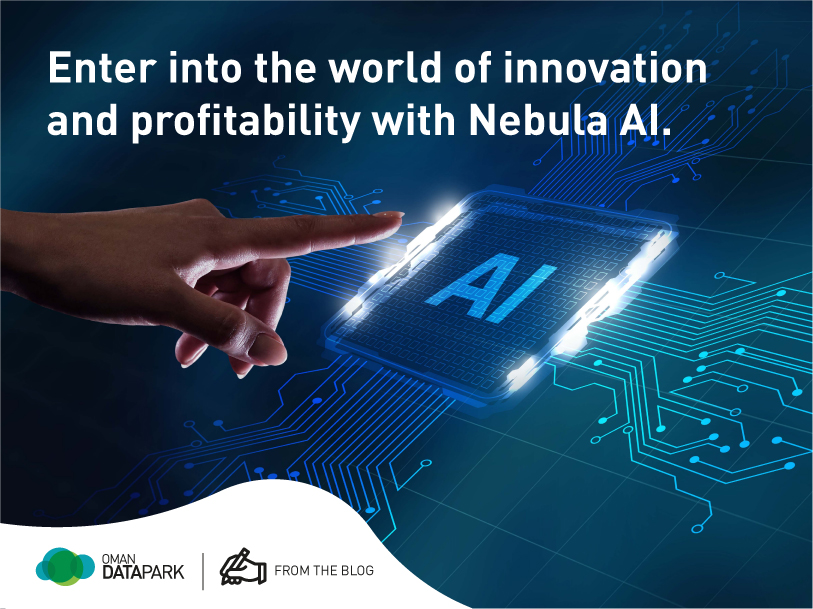April 14, 2022

As a business owner, do you worry about your business data or operations falling prey to a cyber-attack? Or do you know with all certainty that hackers wouldn’t be able to penetrate it?
It would not be wrong for organizations to consider a cybersecurity breach as an inevitability — not an ‘if’, but a ‘when’. And often these breaches can lead to serious, devastating consequences for any organization. A data breach can cost $4.24 million on average. Experts estimate that the average life cycle of a data breach is 314 days. It begins the moment the breach happens until the entire problem is resolved, in which case the business gets exposed and might end up losing data and money.
The bigger worry is, despite the risks of a breach, most businesses do not plan for it seriously and remain unprepared. IBM discovered 77% of security and IT personnel do not believe their business has a cybersecurity incident response plan that is applied consistently throughout the company.
Across the globe, industries and organizations are bringing in groundbreaking changes to the way they network and carry out day-to-day operations with the help of Artificial Intelligence (AI). Whether it is rich or poor, developed or developing, small or large, AI has completely changed the way of doing business and has become integral to our daily lives. The technology offers a unique possibility to move forward and grow. And it’s only the beginning of all the ways how it will make people’s lives more efficient and creative.
Are the risks really so high? Here are a few alarming statistics:
- 53% of companies have over 1,000 sensitive files accessible to every employee.
- 38% of all users have a password that never expires.
- 24% of data breaches are caused by human error.
- A cyberattack occurs every 39 seconds.
Almost on a daily basis, several reports of high-profile cyberattacks make the headlines. The cybercrime rate has reached an all-time high across the world. And due to failure in managing the response, organizations suffer more damage than the breach itself. Therefore, it is more than important for organizations to protect themselves and their customers at any cost. We can say, it is no longer a question of if, it is a question of when.
An organization today has a certain degree of cyber exposure depending on its work type and dependencies. Cyber threats are not going to fizzle out soon. In fact, with the emergence of newer threats, they seem to continue to develop and broaden. Since cybersecurity attacks are very likely to occur and costly to manage, organizations should know how to appropriately respond to such an incident. This is where Cyber Security Drills come in.
It is a broad terminology that comprises machine learning, deep learning, neural network, cognitive vision and natural language. When these evolving technologies come together along with data, analytics and automation, they help businesses to improve their performance and outcomes. AI-driven solutions can thereby perform human-like tasks while applying problem-solving, rationalization, and predictive analysis. It can help make advanced decisions.

SO, WHAT IS A CYBERSECURITY DRILL?
In its simplest description, a cybersecurity drill is a simulated cyber event that can cause serious impact if it had happened in real. Much like a fire drill – a method to practicing how a building or an area would be evacuated in the event of a fire or other emergencies. So everyone knows what to do, when.
A cybersecurity drill is a Response Process designed to test all elements of potential cyber incident detection and build the response strategy. A team of professionals simulates an exact scenario as if your system actually did get hacked. It helps find out any loopholes in the cyber ecosystem and its repercussions. It is an important drill because testing your existing systems and understanding what to do when things go wrong, can be the big difference between a devastating cyber incident and an eventful regular day.
During a cybersecurity drill, team members are asked to respond to the simulation in the same way as they would do it in real. Their actions and responses are then reviewed and discussed how things could have been handled better. These cyber security drill scenarios are organization-specific and are highly useful, that enable tangible collaboration and communication across departments. Preparing for an attack and testing your systems is believed to help your company raise its security to the highest possible level.
To fuel further economic growth in Oman, Oman Data Center has launched Nebula AI that ensures its success in bringing innovative services to Oman. With its impeccable track record of close to a decade in the cloud services industry, TDP now looks forward to helping businesses leap ahead on innovation and profitability through the use of AI, both locally and beyond.
Nebula AI’s solutions and services can significantly enhance sensitive data protection, reduce costs of machine learning training, effectively shorten the deployment time, and eliminate the performance and expansion bottlenecks of hybrid-cloud infrastructure scaling. The core idea of Nebula AI is to keep businesses online and help them scale up in the long run.
Let’s take a closer look at how Nebula AI can help specific industries boost their efficiency, productivity, and, most important – profits.
WHY IS IT SO IMPORTANT?
Let’s look at it this way: there are organizations that have been under some cyber-attack and then there are those who will get attacked, if not prepared fully. The real challenge arises when an organization fails to get hold of things when the breach happens, and thereafter a lack of clarity about how to respond to it in a meticulous manner.
One of the most important things about cyber breaches is that it is a time-pressured, unstructured technical event. It can get more nerve-racking when organizations and their teams have no understanding of how to contain an attack. They may end up bearing a much greater impact in terms of both cost and reputational damage.
A cybersecurity drill helps present a clear picture of current threats related to cyber risk and how to manage them. Having a cybersecurity response process in place is crucial from the perspective of businesses who are adopting newer digital strategies and channels to maintain a competitive edge. And on the other hand, consumer-driven technologies like Artificial Intelligence and Internet of Things (IoT) are enabling more people to use digital products.
This growing use of data analysis, increase in digital activities, usage of cloud and the uninterrupted connectivity of machines and systems have led to a whole new plethora of cyber risks. All of this means that organizations ought to be prepared with robust approaches to safeguard their data and business online.
While recognizing technology and leveraging its benefits, organizations should consider implementing cyber risk management strategies and a contingency plan which is regularly exercised. It should be absorbed in the ecosystem as part of the safety and security culture of the organization.
HOW DOES THE RESPONSE PLAN WORK?
A cyber security testing team deals with uncovering gaps in the security system through investigation and identifying an incident. It focuses on containment, works on its remediation and follow up. For it to be an effective activity, people in the organization too need to have a thorough understanding of the stages of cybersecurity. That is why, simulated events are said to be an excellent way to not only understand them but become more resilient to cyber risks.
All cyber-attacks do not necessarily follow a pattern and can be as unique as the organization. Strategizing and deploying a powerful response in a short span of time can be difficult. Therefore, the cybersecurity response teams have to have varied skillsets along with the right level of expertise. Usually, the structure of the response team depends on the size and nature of the organization. Say a single team can pull off the tasks for smaller organizations. But if it’s a bigger organization, separate teams address incident detection and response, manage the response process, and perform decision-making. This only emphasizes more on the need for a cybersecurity response plan before facing it for real.
A typical response plan starts off with extensive planning, research and preparation. Not to miss, a cyber-response strategy is more effective if the organization clearly allocates responsibilities and tasks at the beginning. As it helps in mapping who is the responsible person, and who is required to support that person. Based on the approach and strategy, automated tests are performed through a set of well-coordinated simulation exercises against real-world threats.
Once the incident is identified, the team moves on to taking the primary steps to contain the impact. Meanwhile, a comprehensive investigation is carried out to ascertain the root cause of the issue. The next steps towards rectification are performed using the insights, and finally, the process comes to a safe and stable state. Through regular follow-up sessions, the team maintains the security status and minimizes the possibility of long-term potential impacts.
Let’s look at it this way: there are organizations that have been under some cyber-attack and then there are those who will get attacked, if not prepared fully. The real challenge arises when an organization fails to get hold of things when the breach happens, and thereafter a lack of clarity about how to respond to it in a meticulous manner.
One of the most important things about cyber breaches is that it is a time-pressured, unstructured technical event. It can get more nerve-racking when organizations and their teams have no understanding of how to contain an attack. They may end up bearing a much greater impact in terms of both cost and reputational damage.
A cybersecurity drill helps present a clear picture of current threats related to cyber risk and how to manage them. Having a cybersecurity response process in place is crucial from the perspective of businesses who are adopting newer digital strategies and channels to maintain a competitive edge. And on the other hand, consumer-driven technologies like Artificial Intelligence and Internet of Things (IoT) are enabling more people to use digital products.
This growing use of data analysis, increase in digital activities, usage of cloud and the uninterrupted connectivity of machines and systems have led to a whole new plethora of cyber risks. All of this means that organizations ought to be prepared with robust approaches to safeguard their data and business online.
While recognizing technology and leveraging its benefits, organizations should consider implementing cyber risk management strategies and a contingency plan which is regularly exercised. It should be absorbed in the ecosystem as part of the safety and security culture of the organization.

CYBER-SECURITY DRILL BY OMAN DATA PARK
‘No battle plan survives contact with the enemy.” This quote from the military applies perfectly to cybersecurity. We believe, if your systems are not tested, then you cannot know if they will work.
This is why our Cybersecurity Drill Test helps you evaluate your organization’s Emergency Readiness. The goal of the simulated cyber-attack is to learn how your organization and people would react to a real cyber-breach. It also helps identify strengths and weaknesses in your plan, test your systems and prepare disaster and incident responses within the ecosystem. It familiarizes your staff with their critical actions, so that their response in a real emergency will be automatic.
During a cybersecurity drill test, The Data Park deploys lightweight agents to probe your cybersecurity defenses. These probes include:
- Challenges to your security postures
- False phishing and ransomware attacks
- Validation scenarios to test network policies
- Preconfigured attack scenarios designed from real cases
- Various actors such as insider threats and national attacks
Following this test, a clear executive report is delivered to your company. Action items can be used to enhance your security perimeter and build your company’s culture of cyber hygiene.
In an interview with imeetcentral, Chris Covell, CIO with Absolute Software said “Having crisis communications plans in place for media, customers, partners, and shareholders will enable a fast, efficient response.” He added, “This includes creating draft email communications, press releases, and landing pages to explain what happened, how your company is addressing it, and what customers should do in the meantime.”
ADVANTAGES OF CYBER SECURITY DRILL
• Recognize Strengths
• Build Resilience
• More Informed Staff
• Cost-effective Strategy
THE BOTTOM LINE
Unfortunately, some organizations have learned it the hard way – a cyber-attack is more or less inevitable. On one hand, an increased online presence makes your business more vulnerable to cyber-attacks, and on the other, hackers are relentlessly looking to break into an organization’s defence system. Thus, preparing for any cyber-attack in advance is the only way to stay ahead of cyber criminals.
With The Data Park, you too can prepare the best defense strategies against cyber-attacks. Leveraging an automated Cyber Security Drill Test, you can maintain full control over cybersecurity of your organization, build a powerful strategy and transformational roadmap to secure operations, save your business from preventable losses and realize your long-term goals.
To know more, reach out to us via phone at +968 2417 1111 | +968 24171195 or
- More powerful processing produces AI and machine learning that drastically reduces false positives in fraud detection algorithms.
- Simplify and speed up the process of checking the financial history of customers and deciding on whether to give them loans or mortgages, or not.
- Leverage AI to provide personalized banking with sophisticated chatbot services to help customers through common transactions.
- Provide a personalized financial plan to your customers based on their spending patterns, income, and goals.
- Benefit from the power of parallel processing and HPC. Machine learning algorithms can be used in a variety of applications.
- Develop and employ more effective trade strategies based on massive data analysis and modelling.
- Improve claims handling for insurance purposes by improving fraud detection and simple case management.
- New fintech solutions can be developed, deployed, and tested much faster with machine learning powered by the Nebula AI system.
To know more, reach out to us via phone at +968 2417 1111 | +968 24171195 or email support@omandatapark.com |sales@omandatapark.com








































